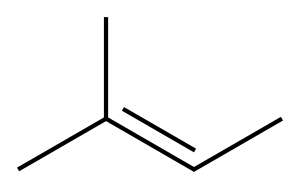
1,1-DIMETHYLPROPYL ETHYL ETHER synthesis
- Product Name:1,1-DIMETHYLPROPYL ETHYL ETHER
- CAS Number:919-94-8
- Molecular formula:C7H16O
- Molecular Weight:116.2

64-17-5
824 suppliers
$10.00/50g

919-94-8
43 suppliers
$95.00/5g
Yield:-
Reaction Conditions:
Rohm and Haas A35 etherification catalyst at 48.8789; under 2828.7 - 3863.02 Torr;Product distribution / selectivity;Continuous catalytic distillation;
Steps:
3
Example 3; Continuous Catalytic Distillation; A catalytic distillation reactor was used to demonstrate the production of TAEE with FCC C5s and ethanol. The feed was a mixture of primarily C5 paraffins and olefins from FCC naphtha, to which ethanol was added, containing 17 wt % isoamylenes (IA), a small amount of C6 compounds (up to a few weight percent) and about 20 ppm propionitrile. The column was 110 feet high, with catalyst located between 60 feet and 100 feet, and the feed point was located at 45 feet. The feed containing isoamylenes was fed to a fixed bed boiling point reactor. The reactor effluent then proceeded to the stripping section of a catalytic distillation column. The fixed bed reactor contained about 42 lbs. of Rohm and Haas A35 etherification catalyst. The catalytic distillation column contained 36 feet of CDModules (a proprietary structured packing available from Catalytic Distillation Technologies) containing Rohm and Haas A35 etherification catalyst. The remaining 44 feet of the catalytic distillation column contained inch Pall rings. Inlet temperature to the primary reactor was 120° F. The catalytic distillation column was operated between 40 and 60 psig. Feed flow was varied from 0 to 110 lb/hr. Reflux was varied from 100 to 200 lb/hr. Overall isoamylene conversion was between 65 and 98%. The ethanol-to-isoamylene molar ratio was varied from 1 to 2.5+During the operation of the column, liquid samples were taken at various column heights.A snapshot of the Continuous Catalytic Distillation operations is presented in FIG. 5, illustrating conditions after 141 hours of continuous operation. As illustrated in FIG. 5, maintaining an ethanol profile such that the ethanol concentration is greatest below the feed point results in the propionitrile exiting the bottom of the column. Additionally, the propionitrile concentration is substantially negligible above the feed location. The negligible concentration of propionitrile above the feed location may be attributed to the increasing concentration of ethanol from the top of the column to a point below the feed location, helping to pull the propionitrile toward the bottom of the column.Additional observations made during column operations (Example 3) indicated that a secondary ethanol injection in the column, above the feed location, may be beneficial to directing the propionitrile downward in the column. This increases the concentration of ethanol in the top portion of the column, further driving the propionitrile in the desired direction within the column. Additionally, it is beneficial to operate the column such that C6 and heavier compounds in the feed are directed more downward than upwards in the column, thus minimizing the “lift” that propionitrile in the feed may encounter.
References:
Boyer, Christopher C.;Loescher, Mitchell E.;Groten, Willibrord A.;Maraschino, Mario J.;Rock, Kerry L. US2009/69608, 2009, A1 Location in patent:Page/Page column 6-7



